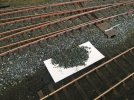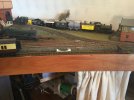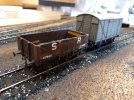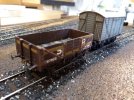So - I took an offcut of ply, and stuck down a bit of cork, to replicate the baseboard. Glued down a couple of scrap bits of copperclad as guides, then added some patches of the siding ballast, with 6 combinations of glue, then left for 36 hours:
1 - sprayed with water, then WWS glue - as per the layout - conductive
2 - sprayed with water, then Geoscenics glue - glue didn't flow well, crumbled to loose when I jabbed it with the meter prongs. Not conductive
3 - sprayed with water, then PVA - the PVA didn't flow well either, but did fix what it reached. Not conductive.
4 - dry, then WWS - conductive
5 - dry, then Geoscenics - didn't flow again, crumbled. not conductive
6 - dry, then PVA - didn't flow again. Not conductive.
So basically, none were any good, though number 3 was probably the least worst, and perhaps would be better with a touch of washing-up liquid to break the surface tension. I'll try a test with latex glue next -
@simond, where do you get it from?

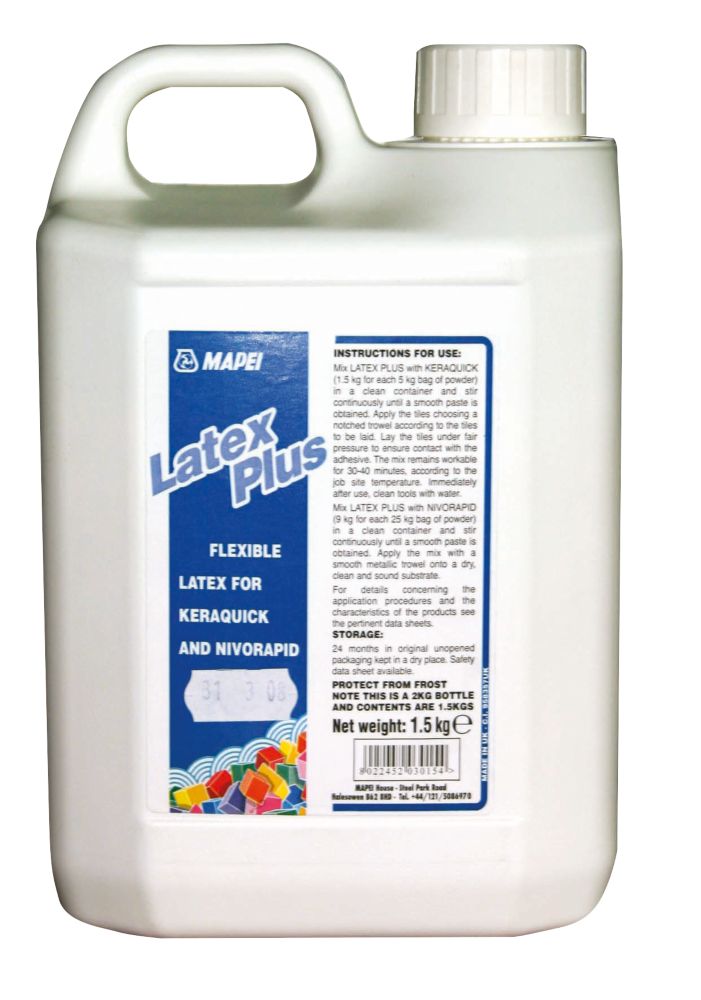
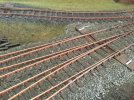
 Full on mains is probably not a wise idea but just curious, with adequate precautions of course, what a few amps from an RSU would do - if anything. Now waiting for all the electrical engineers to tell me what a really bad idea this is!
Full on mains is probably not a wise idea but just curious, with adequate precautions of course, what a few amps from an RSU would do - if anything. Now waiting for all the electrical engineers to tell me what a really bad idea this is! 

